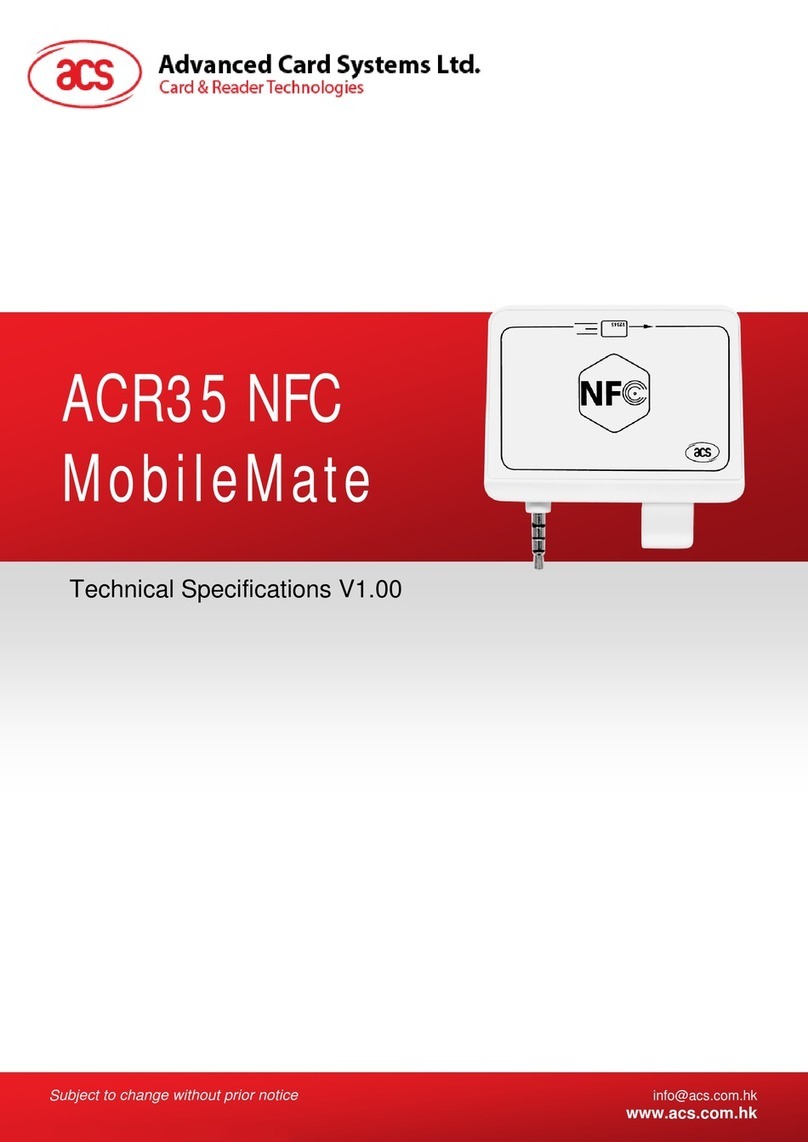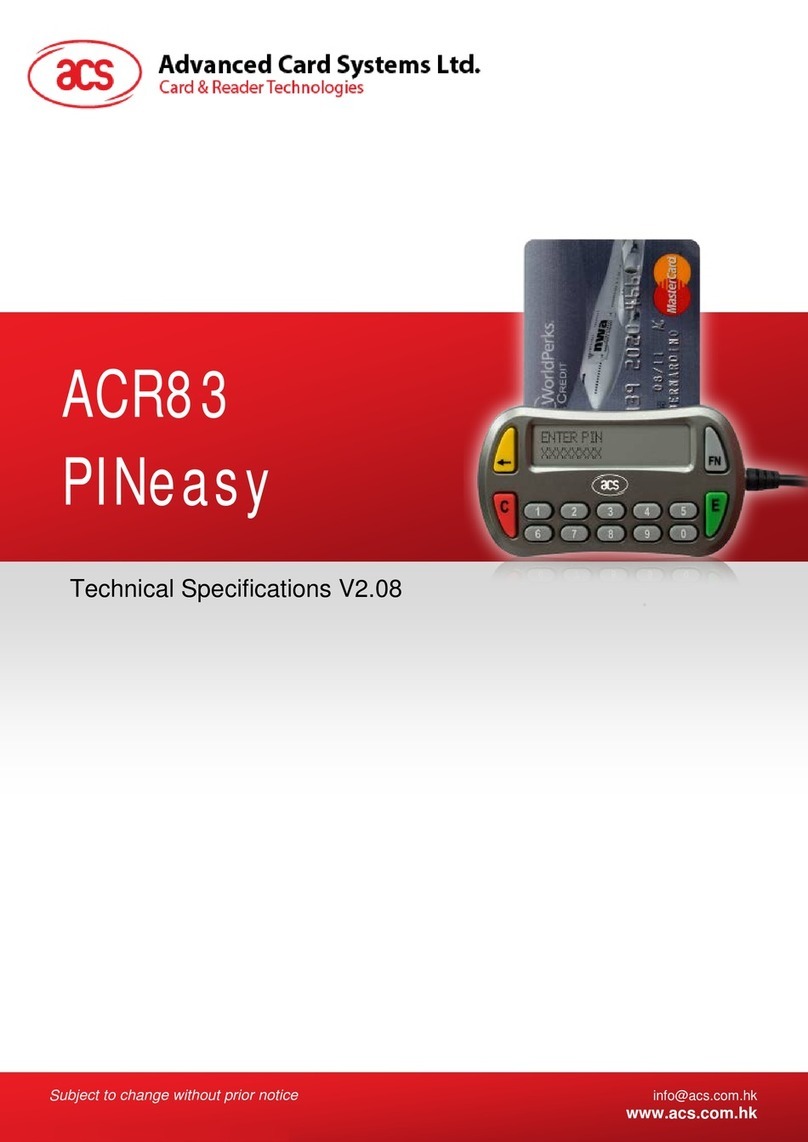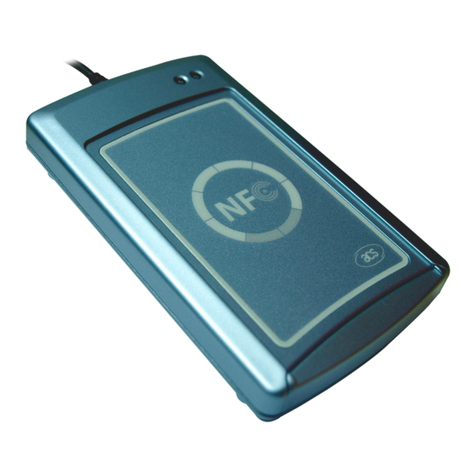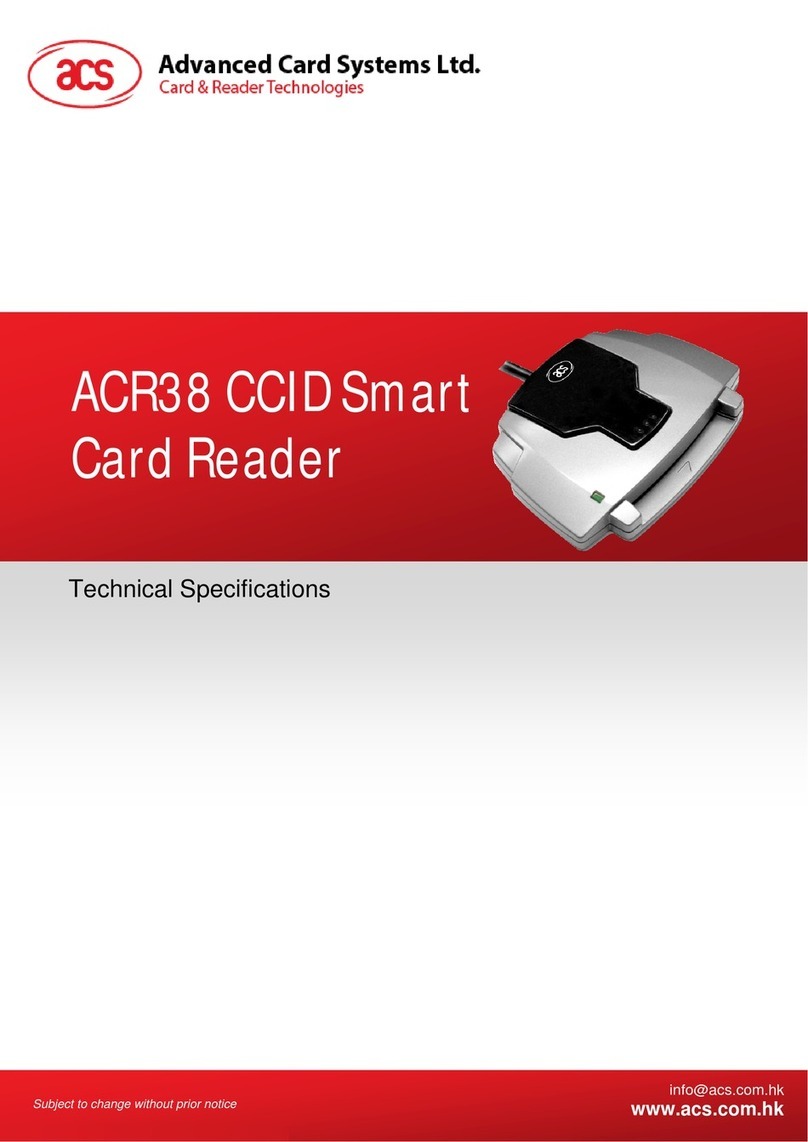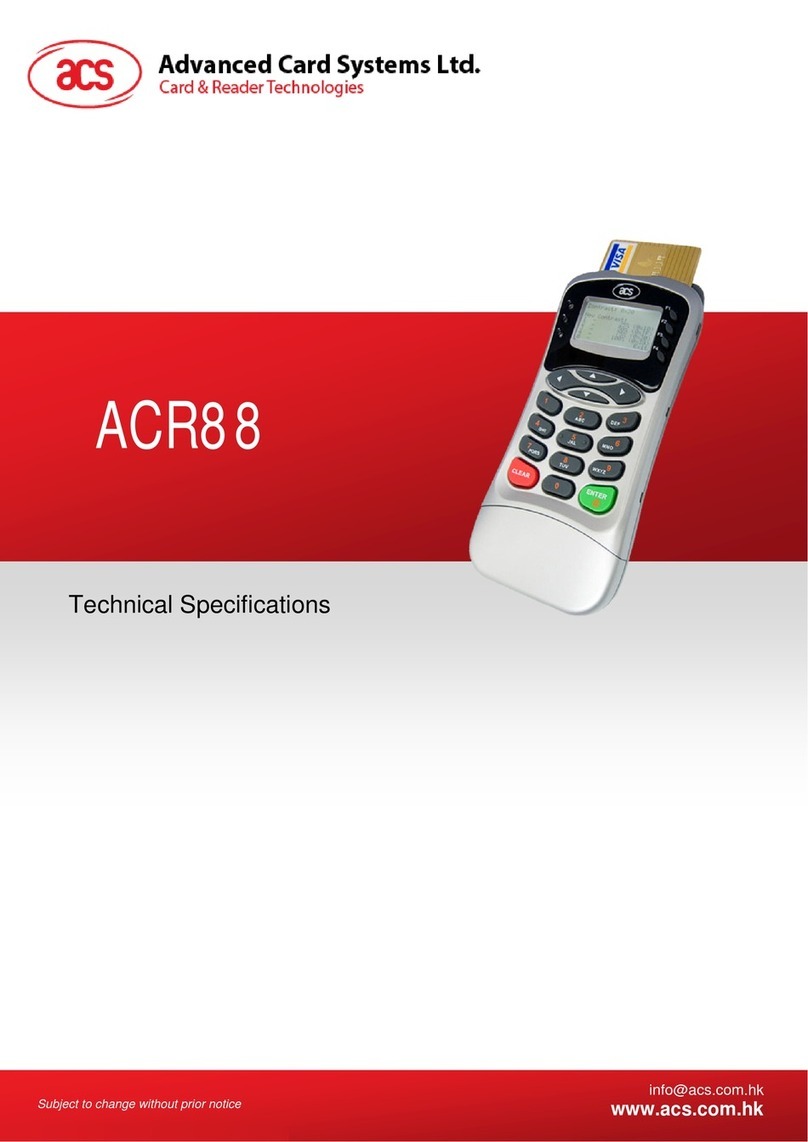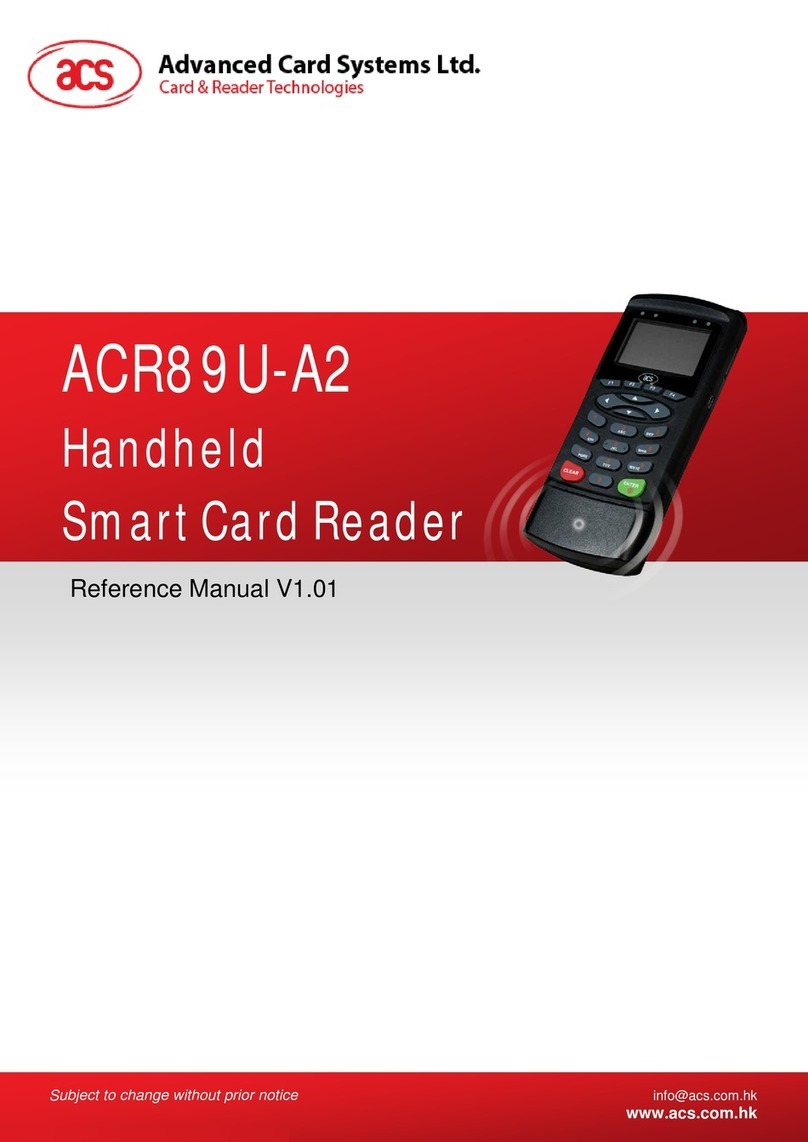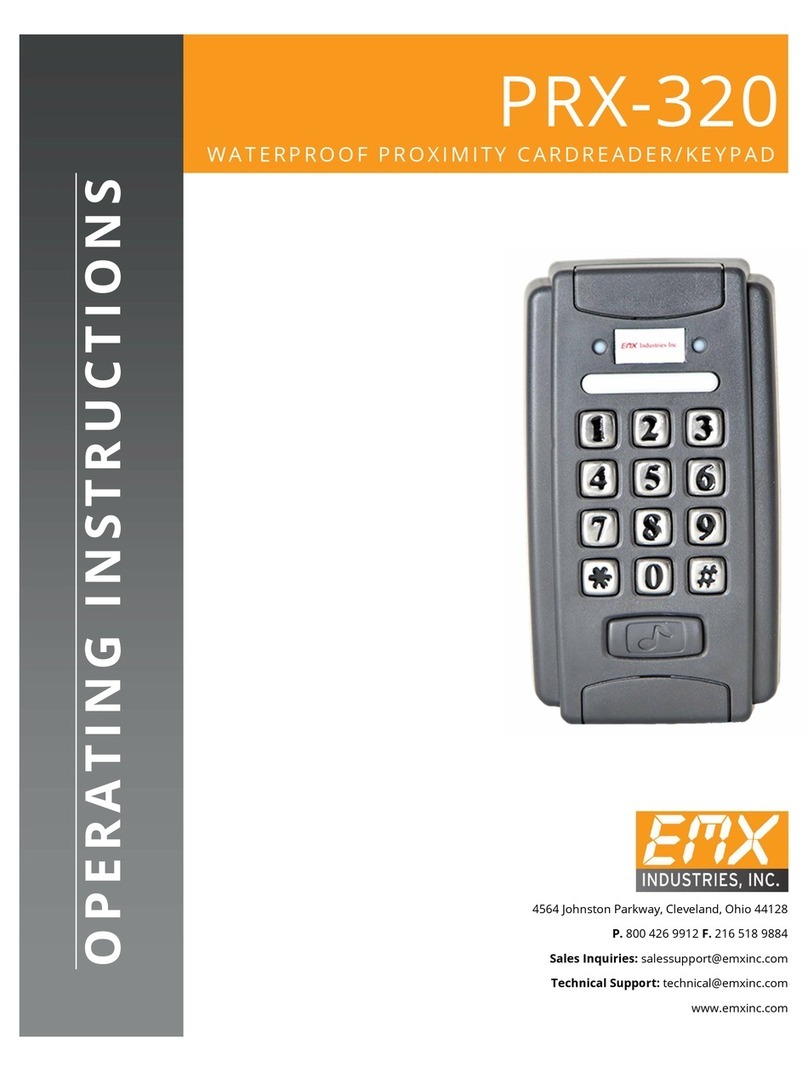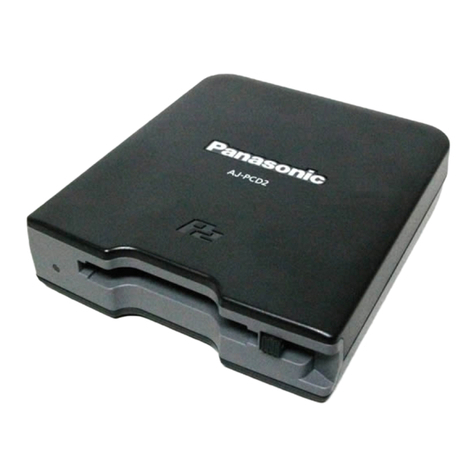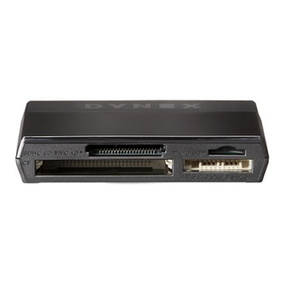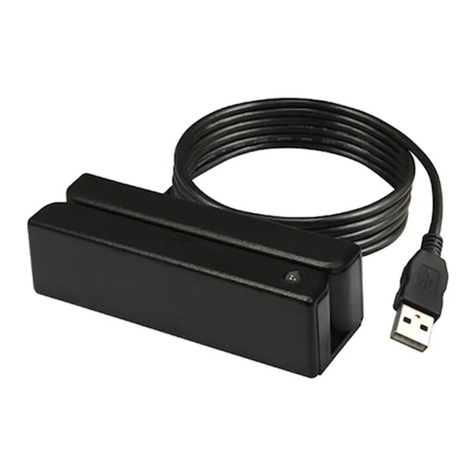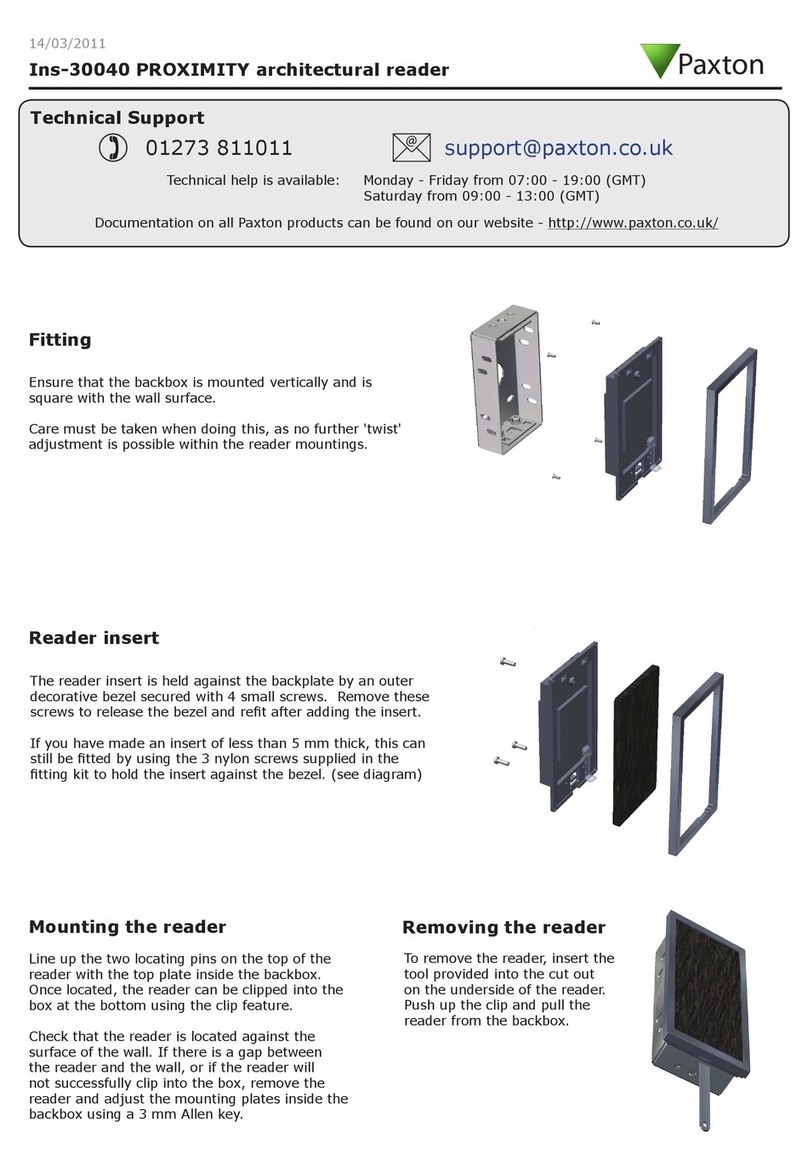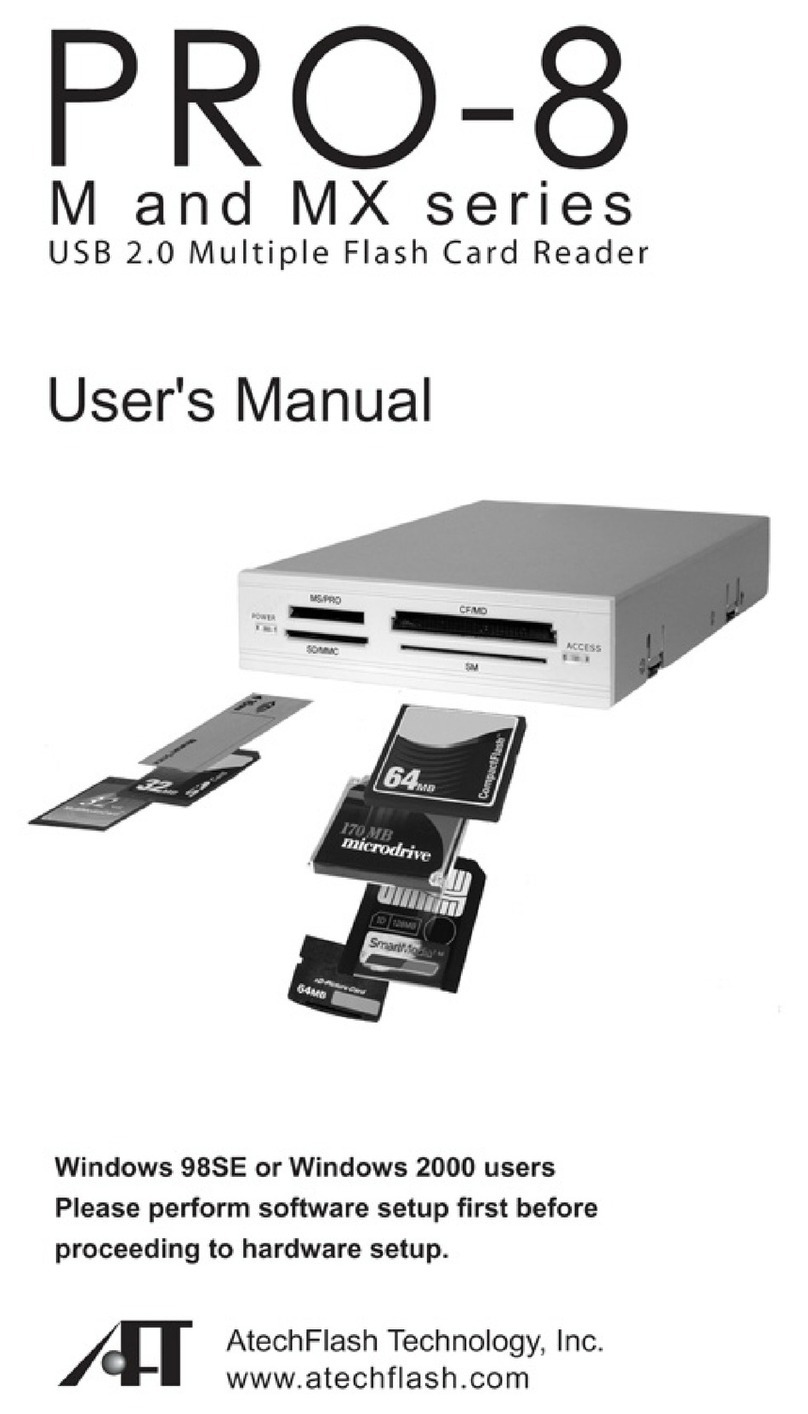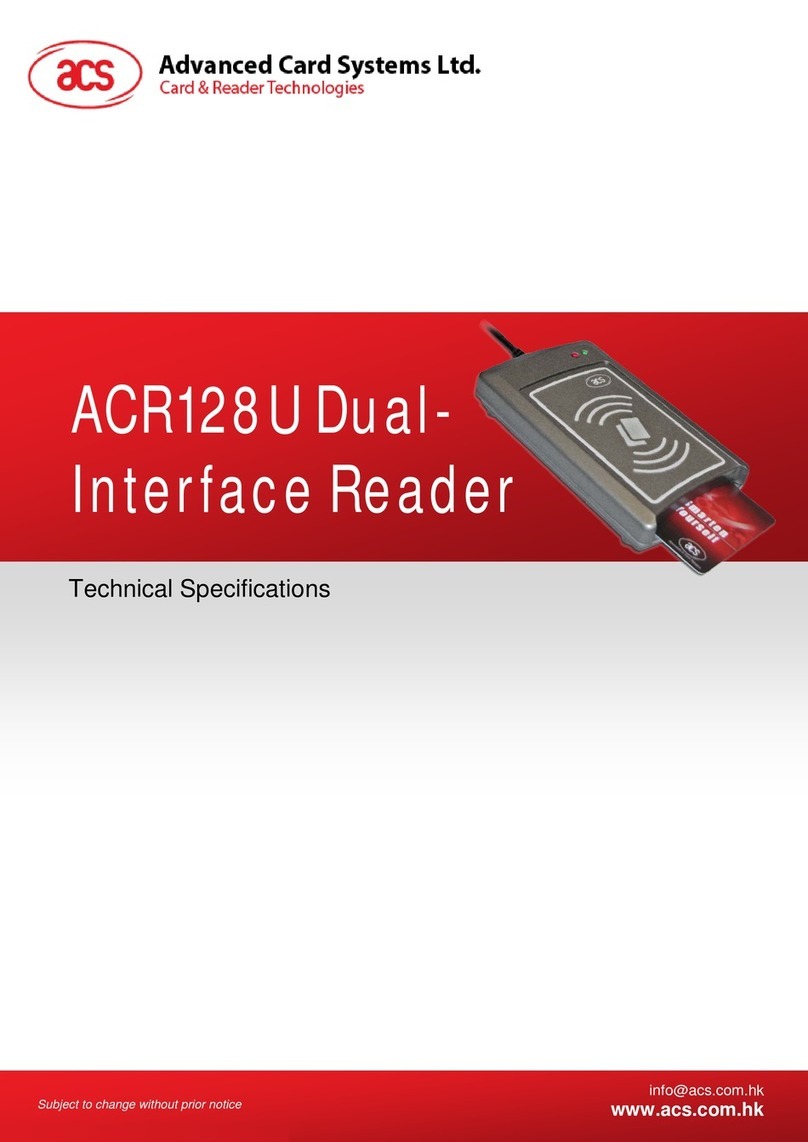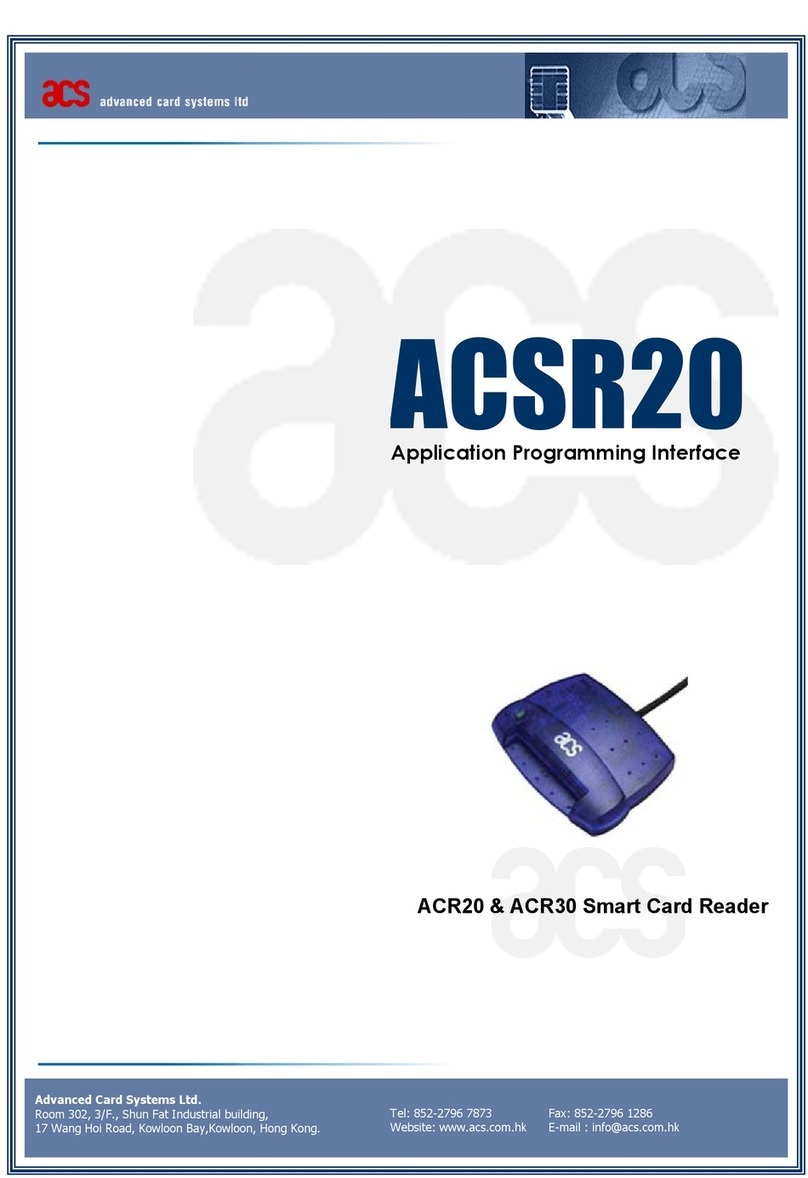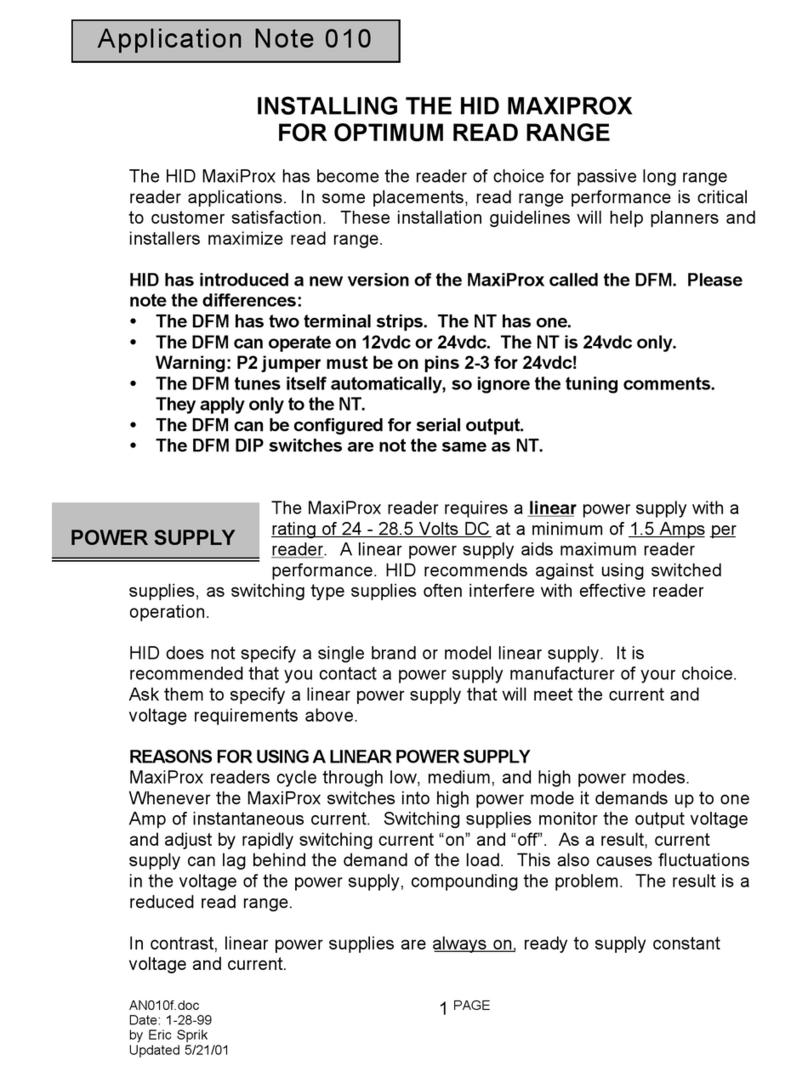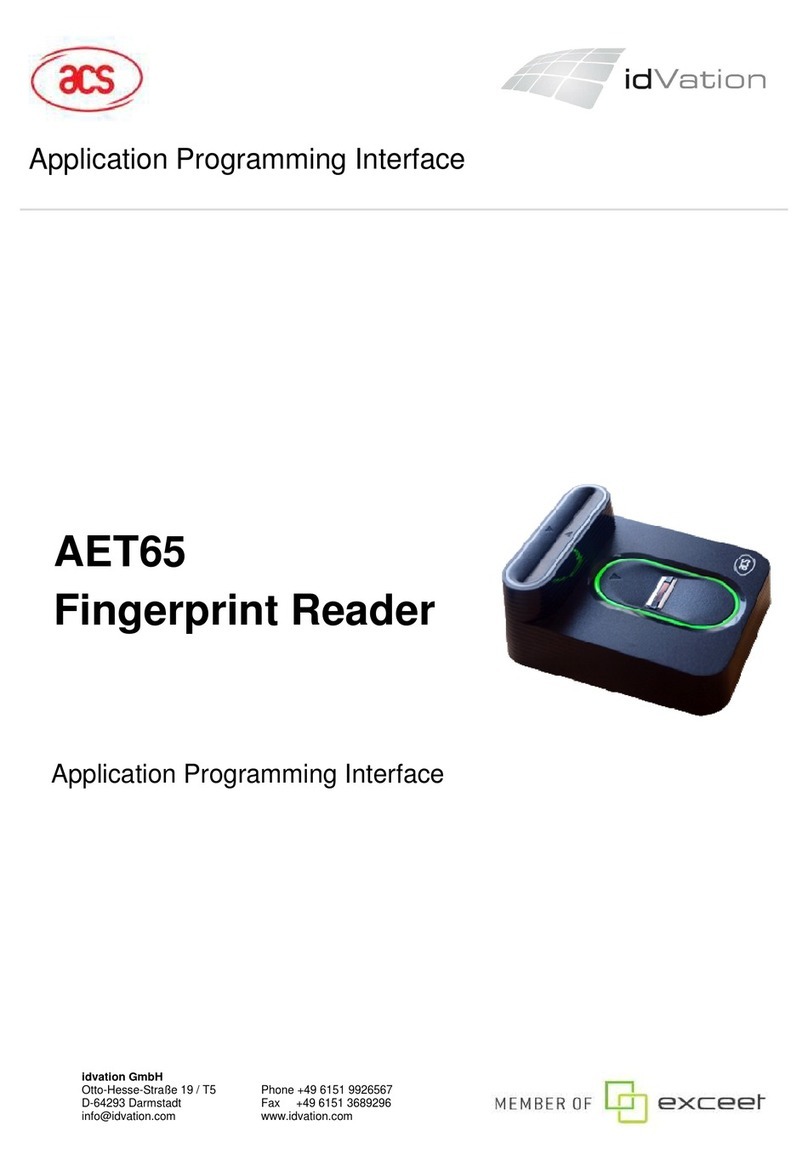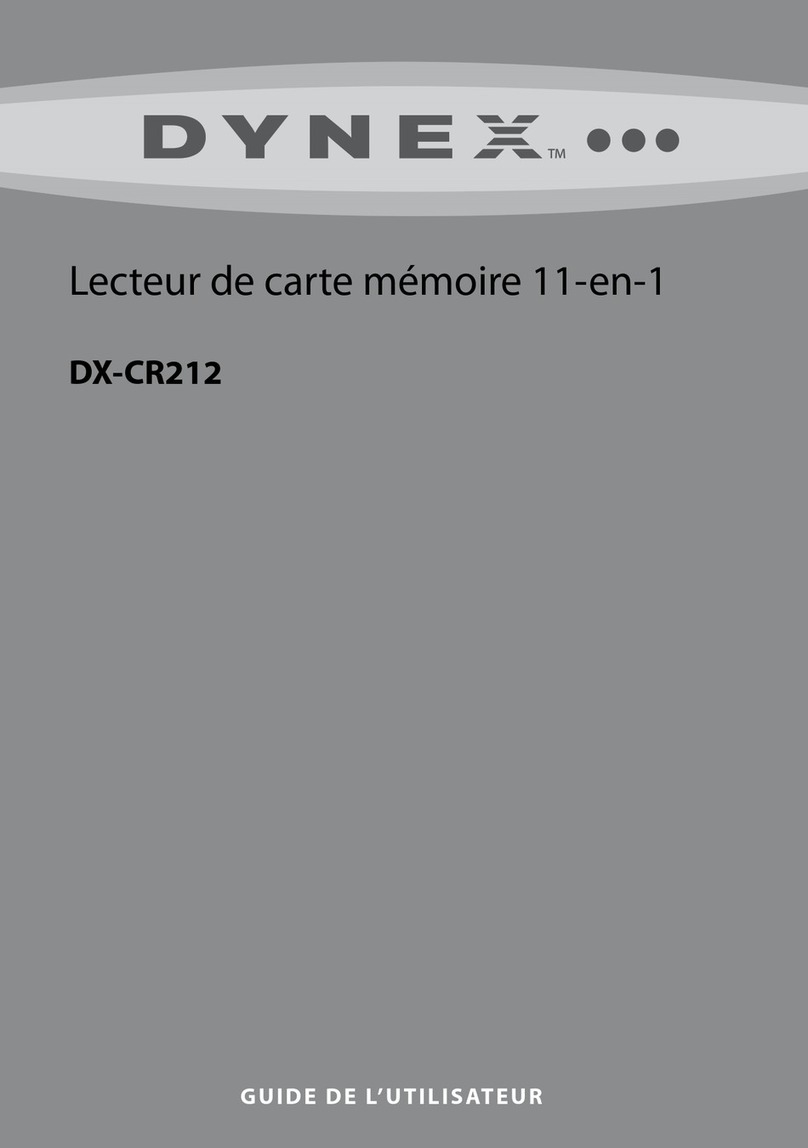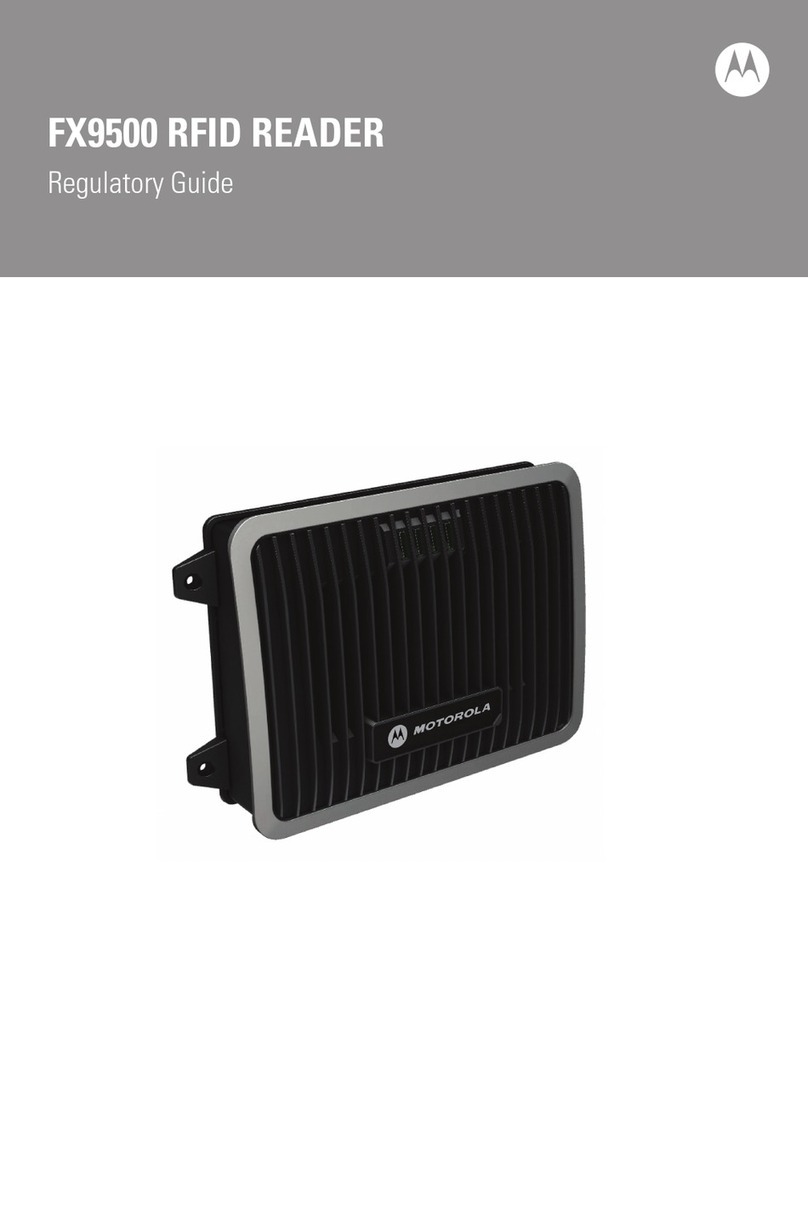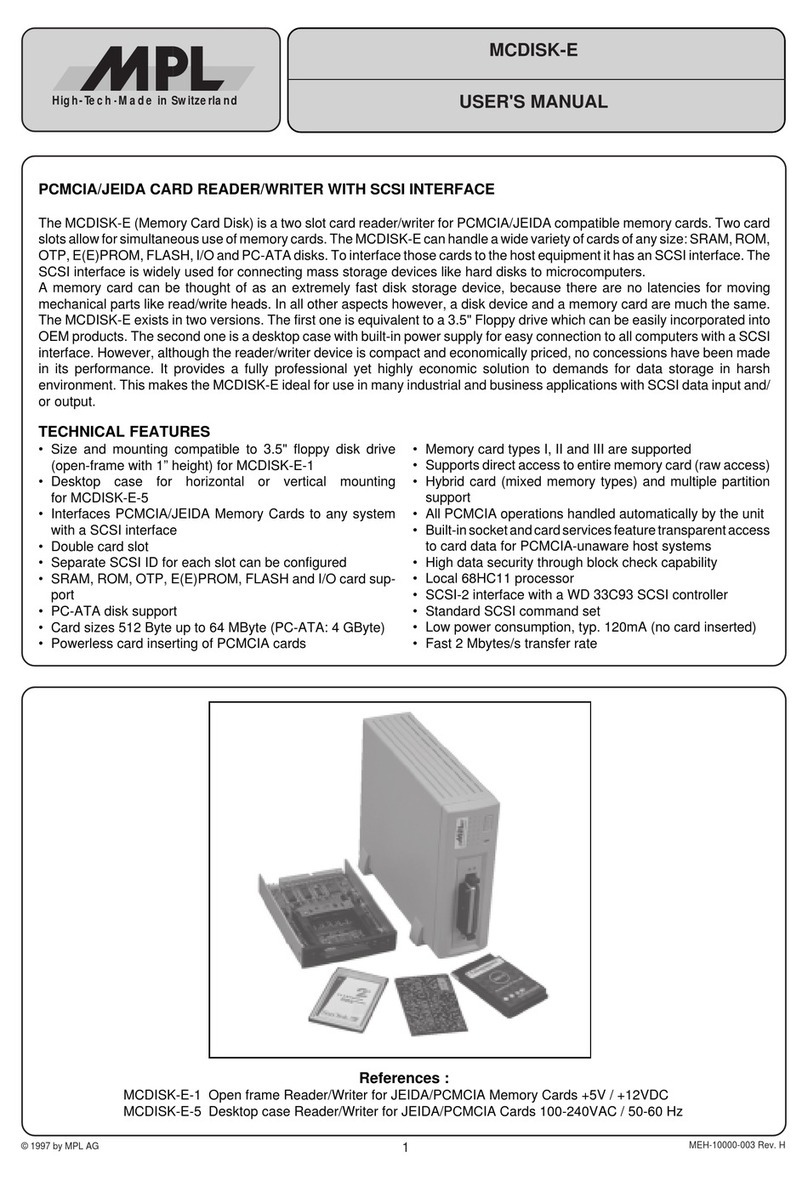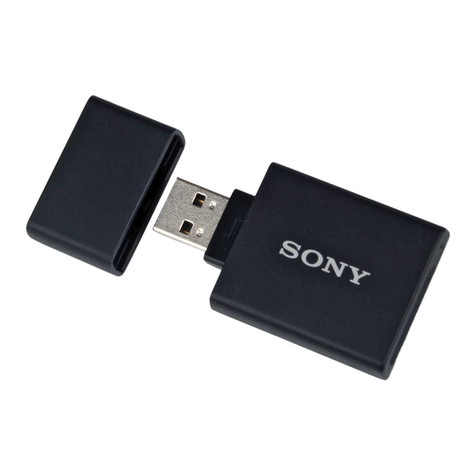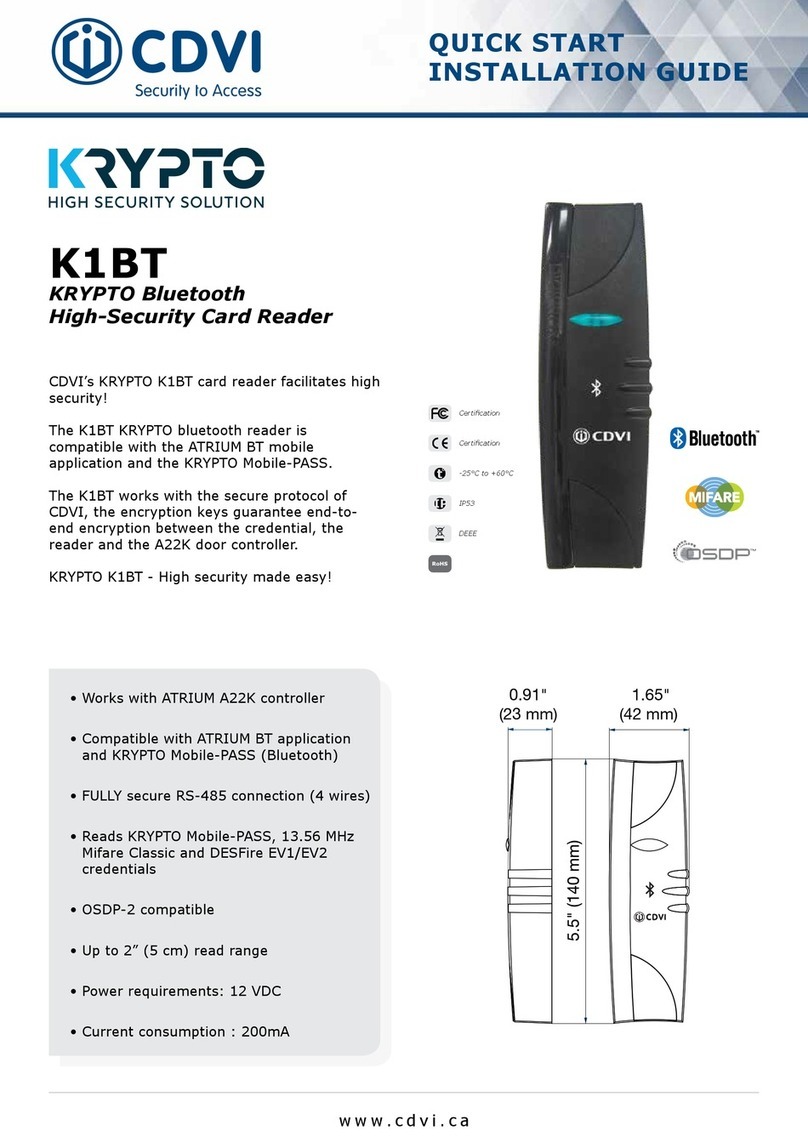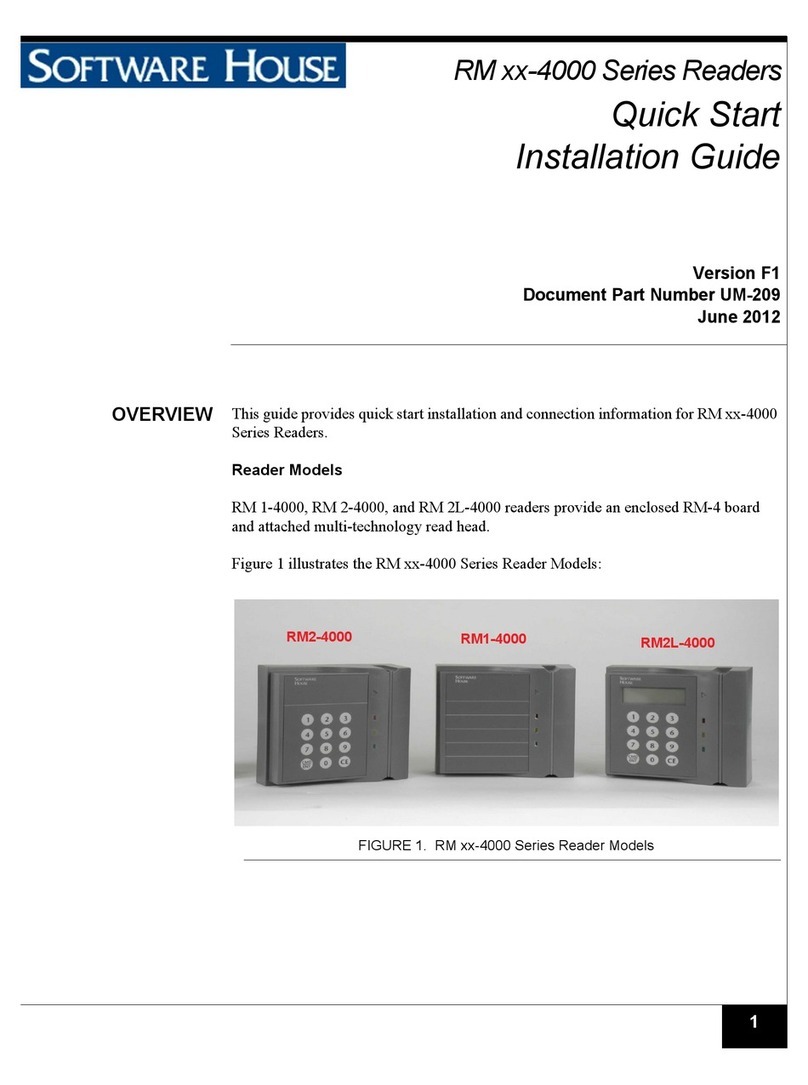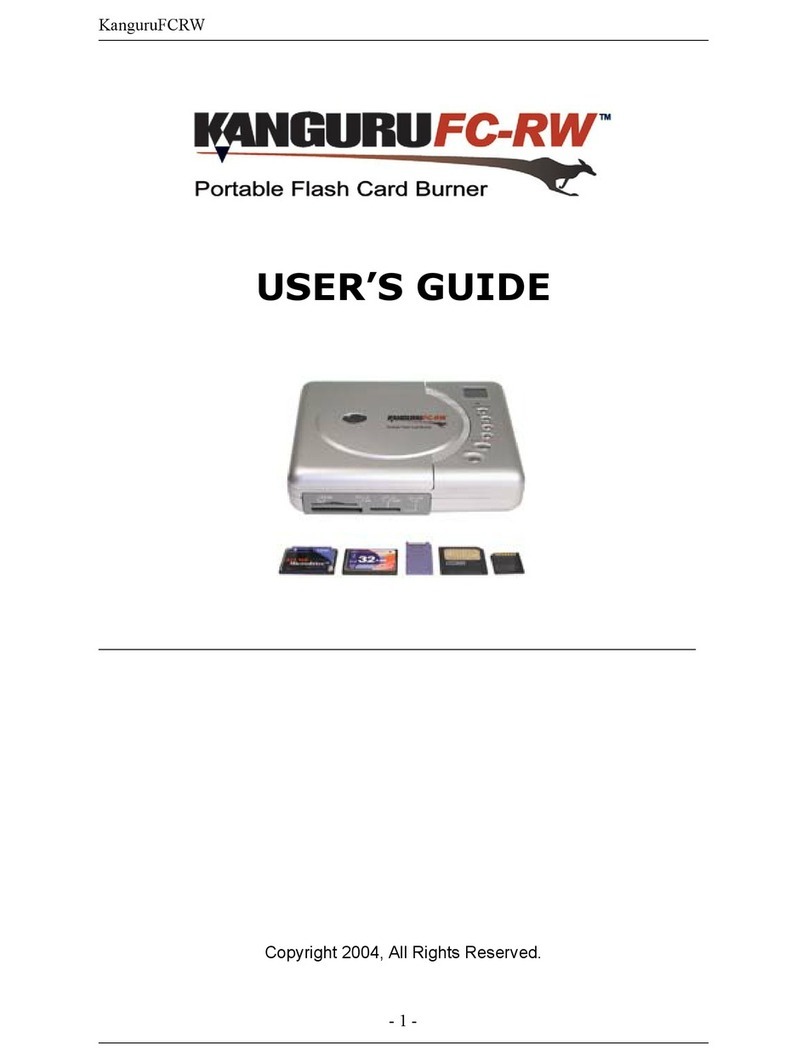
ACR100I – Reference Manual info@acs.com.hk
Version 1.00 www.acs.com.hk
Page 2 of 20
Table of Contents
1.0. Introduction .............................................................................................................3
1.1. SIM-sized Smart Card Reader...............................................................................................3
1.2. Memory Storage Device........................................................................................................3
1.3. Contactless Feature...............................................................................................................3
1.4. Ease of Integration.................................................................................................................3
2.0. Features ...................................................................................................................4
3.0. System Block Diagram............................................................................................5
4.0. Power Supply...........................................................................................................6
4.1. Status LED.............................................................................................................................6
4.2. Embedded MIFARE Chip ......................................................................................................6
5.0. Smart Card Interface...............................................................................................7
5.1. Smart Card Power Supply VCC (C1) ....................................................................................7
5.2. Programming Voltage VPP (C6)............................................................................................7
5.3. Card Type Selection ..............................................................................................................7
5.4. Interface for Microcontroller-based Cards.............................................................................7
5.5. Card Tearing Protection.........................................................................................................7
6.0. USB Interface...........................................................................................................8
6.1. Communication Parameters..................................................................................................8
6.2. Endpoints...............................................................................................................................8
6.2.1. Smart Card Reader.......................................................................................................8
6.2.2. Mass Storage................................................................................................................8
7.0. Communication Protocol........................................................................................9
7.1. Command to the ACR100I...................................................................................................11
7.1.1. CCID Command Pipe Bulk-OUT Messages...............................................................11
7.1.2. CCID Bulk-IN Messages.............................................................................................15
7.1.3. Commands Accessed via PC_to_RDR_XfrBlock.......................................................17
7.2. Mass Storage.......................................................................................................................18
Appendix A. Supported Card Types..............................................................................19
Appendix B. Response Error Codes.............................................................................20
List of Figures
Figure 1 : ACR100I System Block Diagram...........................................................................................5




















